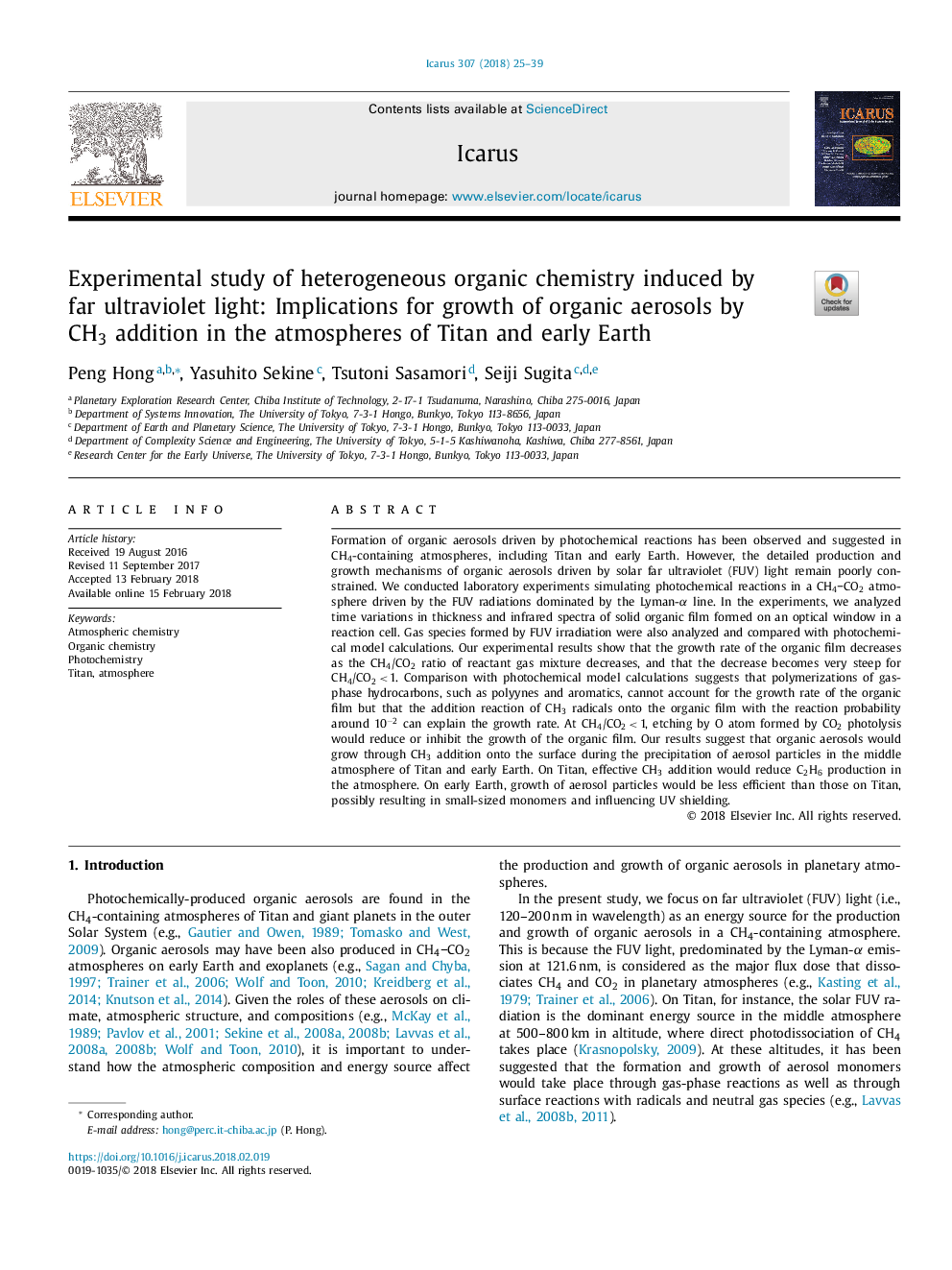| Article ID | Journal | Published Year | Pages | File Type |
|---|---|---|---|---|
| 8134185 | Icarus | 2018 | 15 Pages |
Abstract
Formation of organic aerosols driven by photochemical reactions has been observed and suggested in CH4-containing atmospheres, including Titan and early Earth. However, the detailed production and growth mechanisms of organic aerosols driven by solar far ultraviolet (FUV) light remain poorly constrained. We conducted laboratory experiments simulating photochemical reactions in a CH4CO2 atmosphere driven by the FUV radiations dominated by the Lyman-α line. In the experiments, we analyzed time variations in thickness and infrared spectra of solid organic film formed on an optical window in a reaction cell. Gas species formed by FUV irradiation were also analyzed and compared with photochemical model calculations. Our experimental results show that the growth rate of the organic film decreases as the CH4/CO2 ratio of reactant gas mixture decreases, and that the decrease becomes very steep for CH4/CO2â¯<â¯1. Comparison with photochemical model calculations suggests that polymerizations of gas-phase hydrocarbons, such as polyynes and aromatics, cannot account for the growth rate of the organic film but that the addition reaction of CH3 radicals onto the organic film with the reaction probability around 10â2 can explain the growth rate. At CH4/CO2â¯<â¯1, etching by O atom formed by CO2 photolysis would reduce or inhibit the growth of the organic film. Our results suggest that organic aerosols would grow through CH3 addition onto the surface during the precipitation of aerosol particles in the middle atmosphere of Titan and early Earth. On Titan, effective CH3 addition would reduce C2H6 production in the atmosphere. On early Earth, growth of aerosol particles would be less efficient than those on Titan, possibly resulting in small-sized monomers and influencing UV shielding.
Related Topics
Physical Sciences and Engineering
Earth and Planetary Sciences
Space and Planetary Science
Authors
Hong Peng, Yasuhito Sekine, Tsutoni Sasamori, Seiji Sugita,
